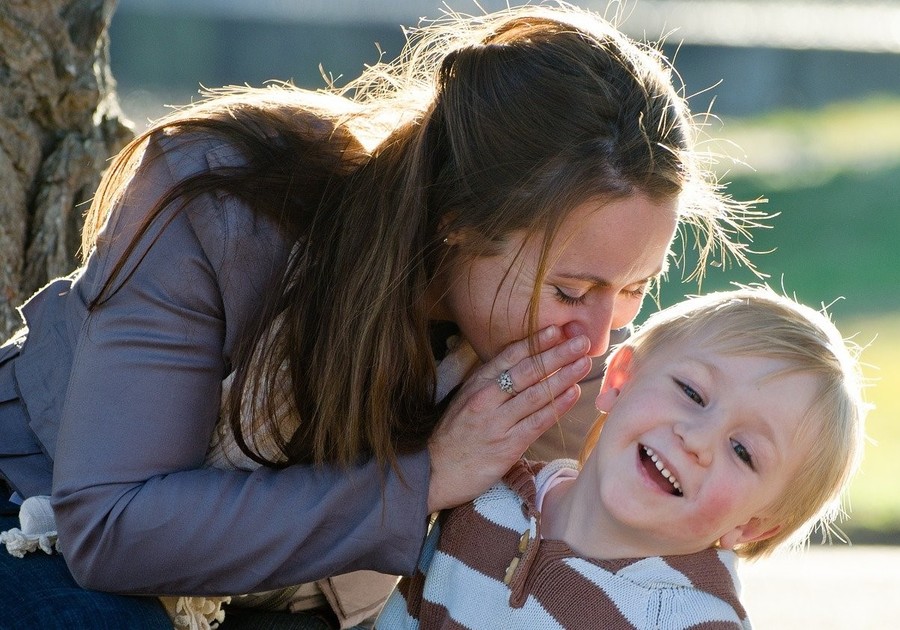Sometimes life asks us to handle parenting challenges that we may not have been equipped to handle, or we may not have had the information available to address these challenges. (Does this sound familiar)? However, some people may be fully equipped because they have recognized the need early on that partnering with their kids require positive parenting. According to Dr. Keith Crnic, a parent-child relationship expert, positive parenting means recognizing what the child needs in the moment and effectively providing that need.
How do you provide this for children who are on the autistic spectrum and are considered high functioning? Certainly, the answer to this may be intuitive for some. But, for others, they may have learned from watching their parents. To start, helping a child on the spectrum starts with a productive and positive parent-child relationship.
According to the National Center on Parent, Family, and Community Engagement, positive parent-child relationships provide the foundation for children’s learning. Through these interactions, children may develop skills needed to function in an environment that is ever-changing.
With this understanding, we could all agree that good parenting and good parenting relationships are fundamental for the healthy development of a child’s body and mind. However, for autistic children, having a healthy and positive parent-child relationship is critical to their survival in a world where many people, according to Heidi Zuniga of the Autism Parenting Magazine, may not understand a disability like autism spectrum disorder because it is a disability that is not always visible to the outside world. Some people have obvious differences in communication, behavioral, and physical skills, but many do not. Some have multiple occurring diagnoses that may or may not be evident to others, making it difficult for them to function in this ever-changing world.
How do you create a positive and healthy parent-child relationship at home to help your children develop tools and coping mechanisms that can be transferable to a different environment that may or may not see their disabilities?
I have gathered what I have learned on my journey to creating a positive parent-child partnership with my child who is on the spectrum and high-functioning.
1. Building Connection and Trust, and Understanding
The security of knowing that you are listening to them is what allows your children to build trust, rapport, and connection. According to the Child Development Institute at the University of North Carolina, children should have opportunities for expression. As parents, we want the best for our autistic children, and we want to step in and to catch them when they fall. But, when we do this too often, we may not be giving them the opportunity to learn and understand on their own. Instead, we must provide him with a space to be creative while at the same time allowing him an opportunity to express his emotions for how he is learning and understanding. So, don’t try to dismiss what he is saying or overtalk him when he feels the need to get his perspectives out. Often, we may want to talk first because we are the parent. Instead, empathize with him and make a point to understand his view by giving him a voice. If he finds that you are listening to him, he may feel empowered and form a more improved connection with you.
His Learning: He learns that he can speak his emotions. If we can talk his feelings back to him and gain a consensus about his feelings, a positive learning experience may have been created between you and the child. He can now take this skill and apply it in a different setting, allowing him to talk about his perspectives so that people can hear him.
2. Being Available When Your Child Needs You
Life Happens. For adults, this means that when unexpected but rather predictable things happen in life, they move on and make adjustments when needed. However, for children on the spectrum, making adjustments may be very difficult and challenging for them. When a child moves from one environment to another, it is essential to prep him for the upcoming changes. According to the Frank Porter Graham’s Child Development Institute at the University of North Carolina, parents or caregivers must be aware of changing behaviors of individuals with autism, especially during times of uncertainty. Our child needs to know that we will be available and have his back if he feels challenged. Remember, our job is not to completely solve the problem for him. Instead, it’s to support him so that he feels empowered to tackle the challenges himself. So, when he is feeling uneasy about entering a crowded space, think about some positive affirmation. Instead, support him and ask him what you can do to help him. “Yes, you can do this; I’ll walk right next to you, and let’s see what happens when we go in there together?” Children on the autistic spectrum may need their parents even more consistently. Constant affirmations and communication between the parent and child are valuable to their well-being.
His Learning: He learns that he can manage his feelings of uneasiness. If he can think about the affirmations as he is adjusting to the change, a positive learning experience may have been created to help him transfer these coping skills to another environment.
3. Meeting Your Child Where He Is
It can sometimes be difficult for parents not to give their children everything that they desire. Often, we may believe that children will do what they are supposed to do when we give them what they want. Nope, this is not the case for some children on the spectrum. For children that are not on the spectrum, providing them with an incentive may prompt them to do chores, homework, and other things around the house or school. However, for children, on the autistic spectrum, given them what they want may not be enough of an incentive to get them to do chores around the house or even to do schoolwork. How can you get your child to do what you want?
From a parent’s perspective, thinking through this will require creativity and collaboration between you and your autistic child. It will be essential to focus on the child’s actual need and ask questions. We can also start by demonstrating and providing stories about how we have to do chores and do our work before moving on to do fun things. Talk this through with him and listen to his response.
His Learning: He learns that he must work through the challenge to get to his target goal. If he can understand that there is a reward for his work at the end, a positive learning experience may have occurred, thus helping him to realize that it is okay to have gratification later. These skills will serve him well in a school environment.
4. The Experience of Choice-Making
With so many activities competing with one another, there are so many opportunities for young children to make decisions and discover new ways of knowing. However, according to the VCU Autism Center for Excellence, making decisions might not always be innate for some children with an autism spectrum disorder because they do not understand the available choices. Others may not be able to communicate their options to others for one reason or another. That is why it becomes even more critical to help our autistic child develop these skills and learn the responsibilities of making choices that suit his tastes. So, how can we help our children build confidence in their decision-making ability while at the same time assisting them with learning the responsibilities of making choices? Start by giving them one to three options (of course, age-appropriate decision-making takes precedence). (I give mine two, and he adds a third; that is another discussion to have later). Accept the decisions they have made and allow them to explain why they have chosen a particular decision, even when you may have preferred the other option. After they have made a choice, I encourage you to sit back and relax because they made a choice. We have to celebrate the small victories—something I recently heard!
His Learning: He learns to communicate and makes choices that will help reduce the chance of interfering behavior and allows him some control over a small aspect of his life. This skill will become even more imperative during school tasks when kids may have access to a choice board.
From my perspective, parenting for each of my children was different. I can certainly say that I have learned a lot more about parenting with my youngest child. For me, parenting never stops; it just changes minute by minute. To help with this change, I make a point to have my child on the family team, which I know is crucial to his success and development. He needs to know that the family loves him and that we will be available when he needs us. By being a sensitive, engaged, and responsive parent, we can help set him on a positive path that teaches him how to cope in an environment that may or may not understand his disabilities. We plan to keep building a warm, caring parent-child relationship with our little one.
Remember every child is a unique person. The contents of this article may not work for everyone. This article is written from my perspective and does not give any specific medical advice. I hope that these are just tips that can start conversations around helping your child with autism. Always reach out to your doctor or healthcare provider if you have any questions or concerns about your child’s health.
Resources: Dr. Keith Crnic; National Center on Parent, Family, and Community Engagement; Autism Parenting Magazine; Child Development Institute at the University of North Carolina; VCU Autism Center for Excellence



